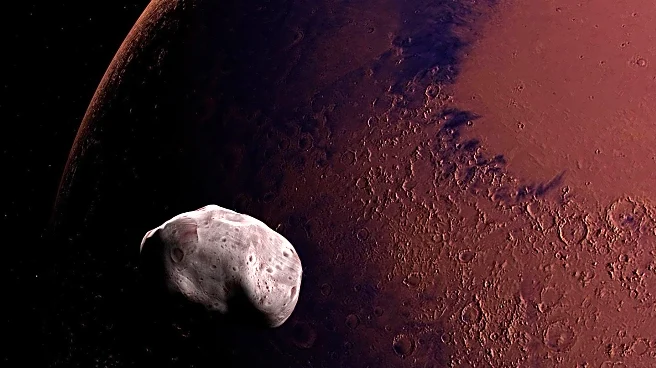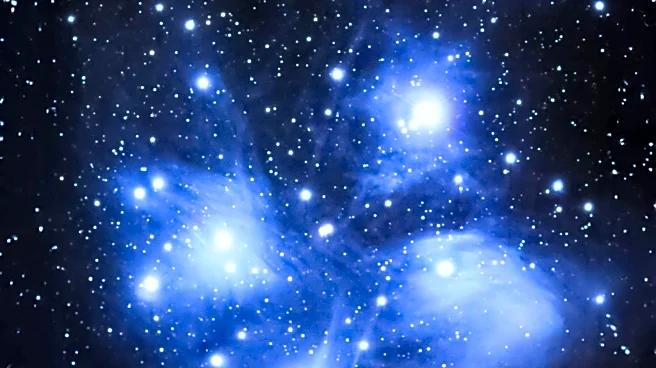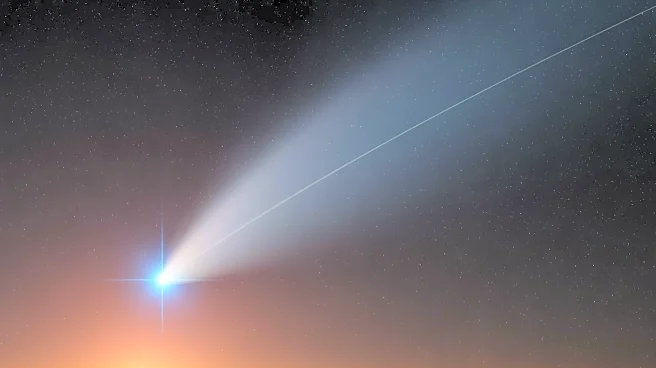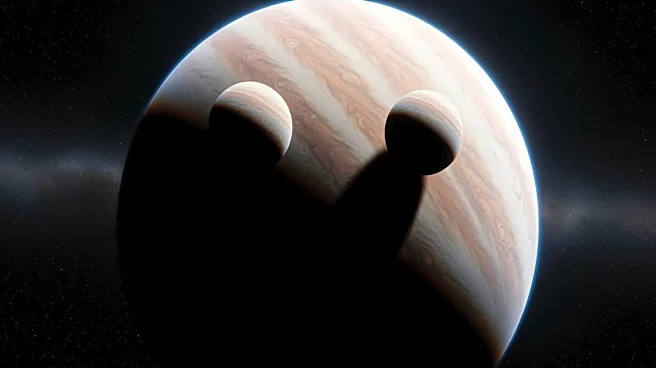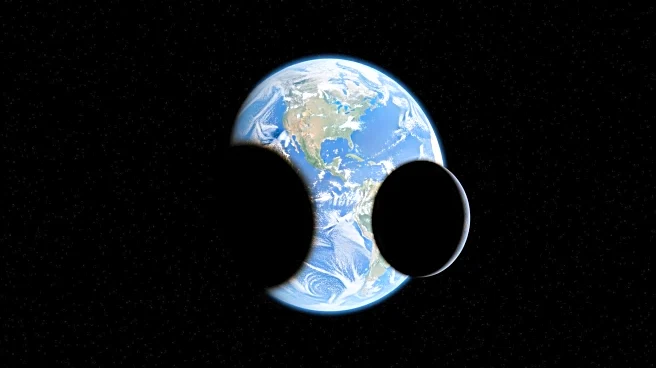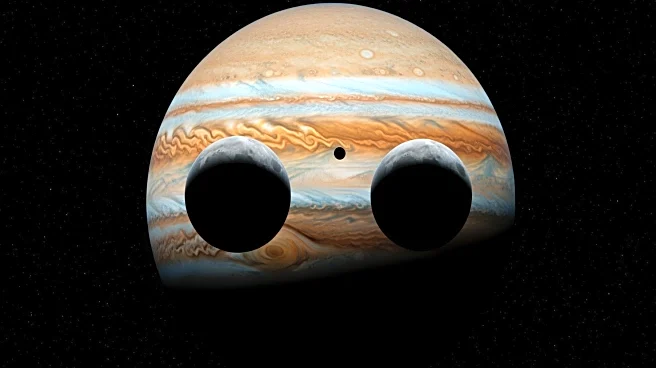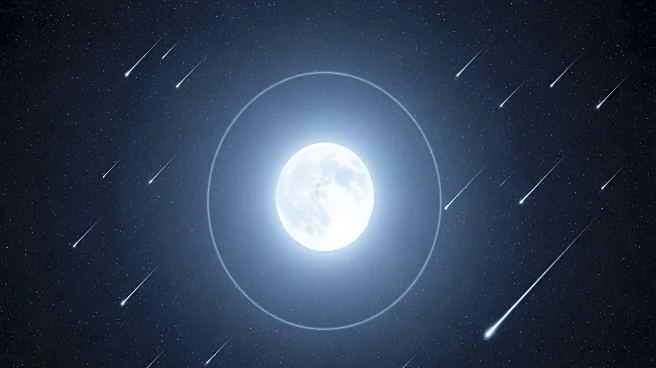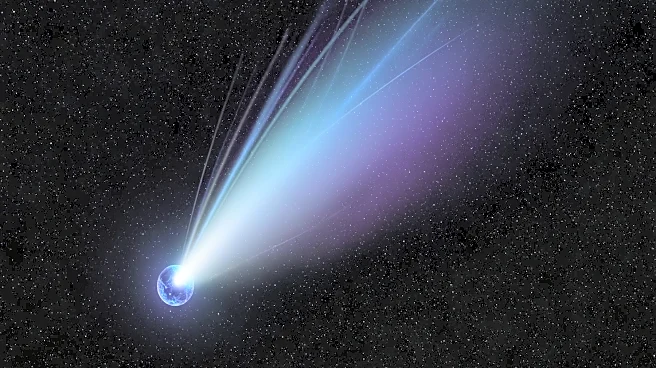What's Happening?
Astronomy Magazine reports a rare celestial event involving Jupiter and its Galilean moons, Io and Europa. On the night of November 4th into the early hours of November 5th, observers will witness the shadows
of these moons simultaneously crossing Jupiter's disk. Io's shadow will begin its transit at approximately 10:20 P.M. EST, followed by Europa's shadow at 12:12 A.M. EST. This event offers a unique 20-minute window where both shadows are visible together while Io itself is transiting. Io's full transit will conclude around 1:45 A.M. EST, with Europa's transit commencing shortly after 2:40 A.M. EST. This phenomenon provides a rare opportunity for astronomy enthusiasts to observe the dynamic interactions of Jupiter's moons.
Why It's Important?
The simultaneous shadow transit of Io and Europa across Jupiter is a significant event for astronomers and sky watchers, offering a rare glimpse into the orbital mechanics of Jupiter's moons. Such events enhance understanding of celestial dynamics and provide valuable observational data. For amateur astronomers and educators, this event serves as an engaging opportunity to foster interest in astronomy and space science. The visibility of this event across the U.S. East Coast makes it accessible to a wide audience, potentially inspiring future generations of astronomers.
What's Next?
Observers are encouraged to prepare for the event by converting the given times to their local time zones to ensure they do not miss the brief show. As the event occurs during the transition to standard time, careful attention to time conversion is necessary. Astronomy enthusiasts may use this opportunity to engage with local astronomy clubs or educational institutions to share observations and insights. The event may also prompt discussions on the dynamics of planetary systems and the role of observational astronomy in scientific discovery.
Beyond the Headlines
This celestial event highlights the intricate dance of Jupiter's moons and their shadows, offering a deeper understanding of gravitational interactions within the solar system. It underscores the importance of observational astronomy in uncovering the complexities of planetary systems. The event may also inspire discussions on the technological advancements in telescopic equipment that allow for such detailed observations, emphasizing the role of innovation in expanding our knowledge of the universe.


